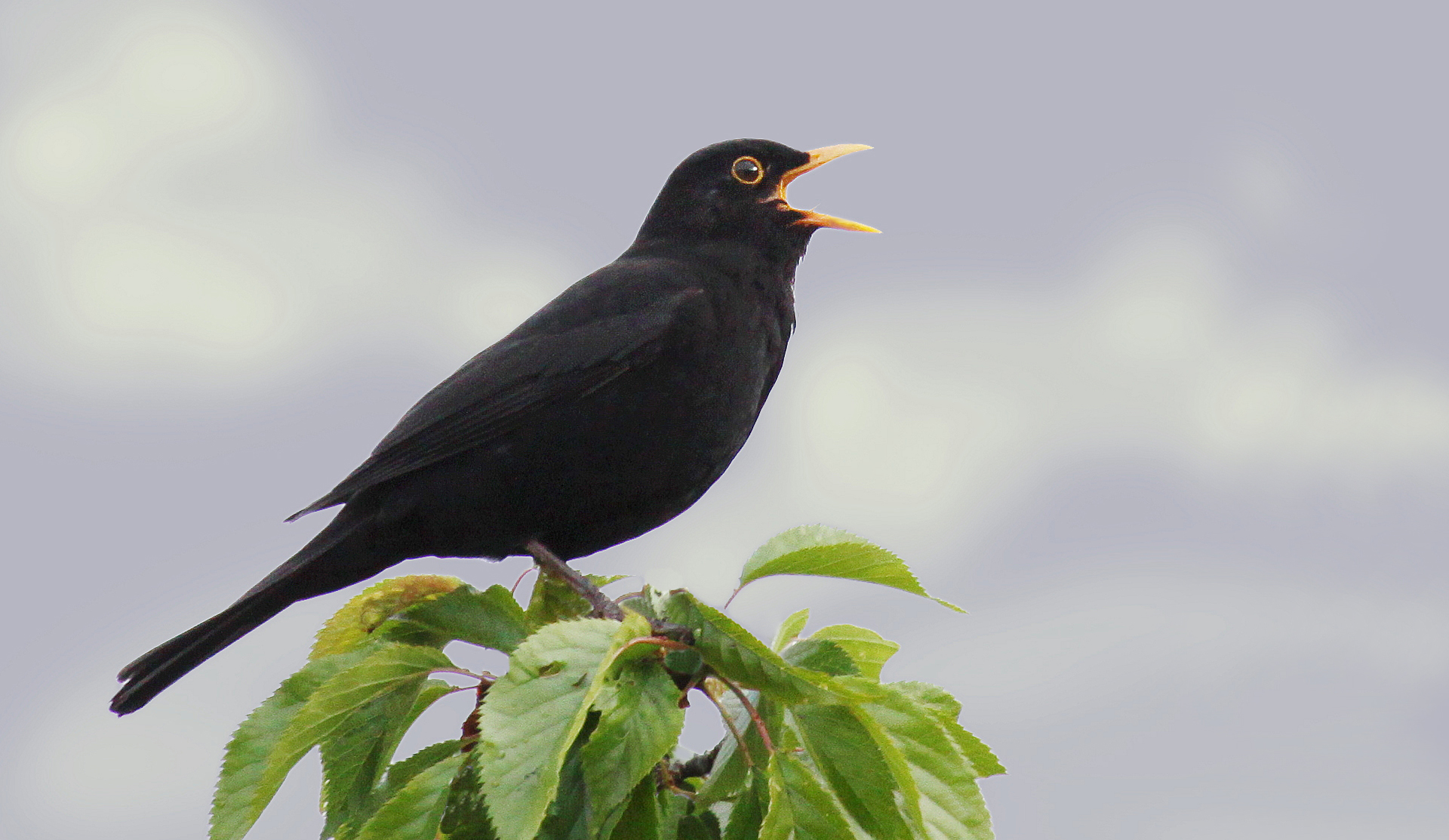


That’s because our American Robin and their Blackbird are closely related and their behaviors are very similar. But the millions of Europeans who are also reading this column right now have likely guessed that my mystery bird is a Blackbird. Worms! Come on, what bird does that? Because you live on Cape Cod, you should have figured out that the bird I’m talking about is the American Robin. Did you get it? No? Just think for a minute. In the winter the bird switches from eating worms to eating berries. It typically feeds on open lawns by running a few feet, stopping, cocking its head to one side and then digging into the lawn for fresh worms. Hopefully.) The bird I’m thinking of is a medium-sized songbird that is found in parks, gardens and backyards. (I know it seems like I’m going off- topic, but hopefully it will make sense by the end. I’ll describe a bird and you have to try to guess which bird I’m talking about. Hey, Kari, wanna play a game? Let’s play “Guess the Bird.” This is a game bored birders play on long road trips. Europe’s Blackbird should have been called the “Black Thrush” because the bird is a thrush and it’s solid black, but then Paul wouldn’t have written such a beautiful song. There’s the Grey-backed Thrush, the Chestnut Thrush, the Red-throated Thrush, etc.

A lot of them also have the word “thrush” in their name. Europe’s Blackbirds belong to a family of birds called “true thrushes.” There are over sixty different true thrushes throughout the world and many have great voices. The reason Europe’s Blackbirds sing so much better is because they aren’t really blackbirds they’re thrushes. Comparing their Blackbirds to our blackbirds is like comparing Adele to Marge Simpson. Many Americans are surprised that Europe’s Blackbirds have such nice singing voices because the blackbirds we have around here sound awful. (There must have been a scheduling conflict.) (See? I knew I could work the Red Sox in somehow.) I kept hoping the original Blackbird would be a surprise guest, fly out on stage and sing a duet with Paul, but it didn’t happen. Blackbird went on to be one of Paul’s most popular songs and I saw him sing it at Fenway Park two summers ago. When Paul found this recording he used it in his new song. I’m not sure why he did it, but he did it and then he added the bird’s song to the immense collection of recordings and sound effects in the studio. Sometime in 1965, a recording engineer who worked at Abbey Road Studios recorded a real live Blackbird that was singing in his backyard. What about the bird on the song? Is it actually a real Blackbird? Yes, it is. Lyrics like, “Take these broken wings and learn to fly” are pretty radical for cutesy Paul. He wanted to show support for the African-American women who were dealing with the racial turmoil that was engulfing our country at that time. Who knew? Back in the ‘60s, for some reason, British men called women “birds.” Paul used the word “blackbird” as a metaphor. (Even the group The Byrds didn’t sing about real birds.) The song is about civil rights. Is the song about actual birds? No, sorry to say. Only his guitar and the tapping of his own foot accompanied him on the record. While his band mates were busy elsewhere, Paul wrote and recorded Blackbird all by himself. Here’s the most common back-story about this particular song. As is the case with most things about The Beatles, there are always several explanations about the origins of their songs. The song, Blackbird, written by Paul McCartney, first appeared on the 1968 double album entitled, The Beatles (which we all call the White Album. Even birds wanted to play with the Fab Four. But we aren’t talking about “most” rock stars we are talking about The Beatles. I doubt most rock stars would worry about it either. They just add whatever birdcalls sound good to them. You are wise to doubt whether the birdcalls at the end of Blackbird are legit. With this nasty winter weather, it would be nice to talk a little baseball…even the Red Sox. It’s too bad you didn’t work the Red Sox in there also, or you would have hit the trifecta. Your question contained two of my favorite topics, birds and The Beatles. I question whether it is truly a blackbird singing. Can you solve this musical puzzle? At the end of the song there are birdcalls. While reading about your recent travels, I was listening to The Beatles’ song, “Blackbird” (a total coincidence).


 0 kommentar(er)
0 kommentar(er)
